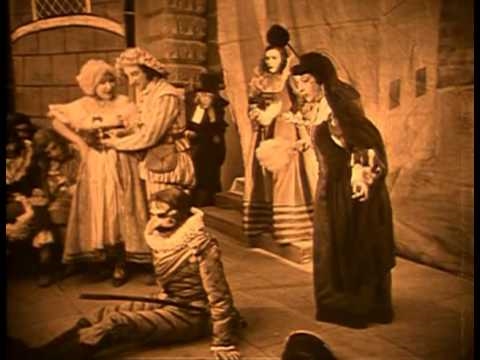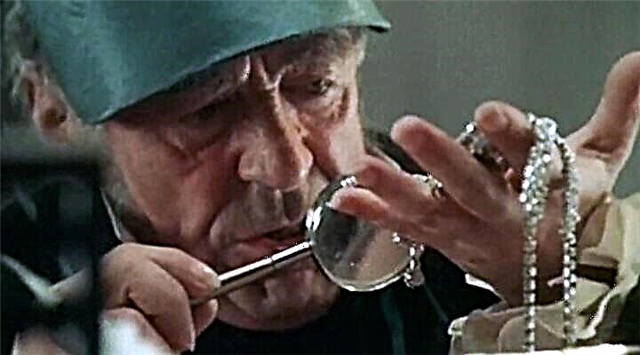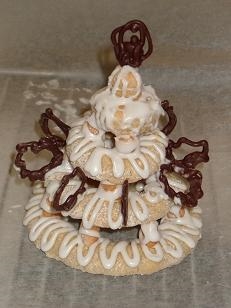From childhood, the narrator is distinguished by meekness of temper and love for animals. Having married early, the narrator gladly discovers similar features in his wife, and especially love for animals. At home they live birds, goldfish, a thoroughbred dog, rabbits, a monkey and a cat. A beautiful, completely black cat named Pluto is the owner's favorite. The cat reciprocates - he is very much attached to the owner and always follows him on the heels.
So it lasts for several years, but the narrator changes greatly under the influence of alcohol, which he calls the Devilish Temptation. He becomes gloomy and irritable, starts screaming at his wife and after a while raises his hand. The storyteller’s pets also feel this change - he not only ceases to pay attention to them, but also treats them badly. Only to Pluto, he still has warm feelings, and therefore does not offend the cat. But the attachment to alcohol is becoming stronger, and even Pluto now suffers from the hostile bad temper.
Late at night, in a drink, the storyteller returns home, and it occurs to him that the cat is avoiding him. A young man catches Pluto. The cat, frightened by rudeness, bites the owner's hand - not much, but still bleeding.This enrages the narrator. He grabs a knife from his waistcoat pocket and cuts out a cat’s eyes without pity. In the morning, what he did causes him remorse, but not for long - he soon drowns it without a trace in alcohol.
The cat’s wound slowly heals, he is still pacing around the house, but at the sight of his offender runs away from him in fear. At first, the narrator bitterly regrets that the creature who loved him so much now hates him so much. However, he continues to drink, and regret disappears, in his place comes anger. One morning a young alcoholic calmly hangs a cat.
The night after the crime is committed, a fire begins in the narrator's house. The narrator, his servant and wife are saved by a miracle. From the house remains one wall. In the morning, returning to the ashes, the fire-burner discovers a crowd of onlookers near her. They are attracted by the pattern that appeared on the wall, like a bas-relief - a huge cat with a noose around its neck.
For many months, the ghost of the deed haunts the narrator. He searches for dirty cat dens, similar to Pluto, and finds one in one tavern. The owner of the institution refuses money - he does not know where this cat is from and whose it is. The cat is similar to Pluto, but with one difference: its chest is decorated with a dirty white spot. In the morning, the narrator sees another similarity - like Pluto, the new cat does not have one eye.
The cat quickly takes root in the new house and becomes the wife’s favorite, and the narrator begins to feel a growing dislike for him. But the more the narrator’s hostility grows, the more the cat becomes attached to him.The narrator begins to fear the cat. He has a desire to kill the animal, but he restrains himself, remembering the old guilt. Meanwhile, the shapeless white spot on the cat's chest begins to change and, in the end, takes the form of a gallows. Because of this, the alcoholic hates the cat more and more.
Once, the storyteller and his wife go down to the basement for economic needs. A cat mates with them, tripping over which the narrator almost breaks his neck. This becomes the last straw. The narrator grabs an ax and is about to kill the cat in place. The wife holds his hand and is paid for with her life - her husband cuts her head with an ax.
Having committed the murder, the narrator begins to think about what to do with the corpse, and decides to walled him up in the basement wall. Having walled up his dead wife, the narrator sets off to look for the cat, but does not find it. The cat disappeared and does not appear on the second day or the third. These nights, the narrator sleeps calmly, despite the burden of crime on his soul.
In connection with the disappearance of the woman, a brief inquiry and search was carried out, which did not bring any results. On the fourth day, policemen suddenly come back into the house. They make a thorough search, including in the basement, which also does not give any results. Servants of order are about to leave, but the narrator, triumphing and feeling his impunity, begins to praise the excellent building without a single crack. In confirmation of his words, he hits a cane on the wall in the place where the corpse of his wife is walled up.Suddenly, for the police and the killer himself, a scream is heard from behind the wall, turning into a scream.
Police break the wall and find the corpse of a woman. A cat sits on the head of the corpse, which the narrator accidentally walled up in the wall. It is with his cry that he betrays the killer, dooming him to death at the hands of the executioner.
The narrator sets out this story in order to lighten his soul before the coming end.












